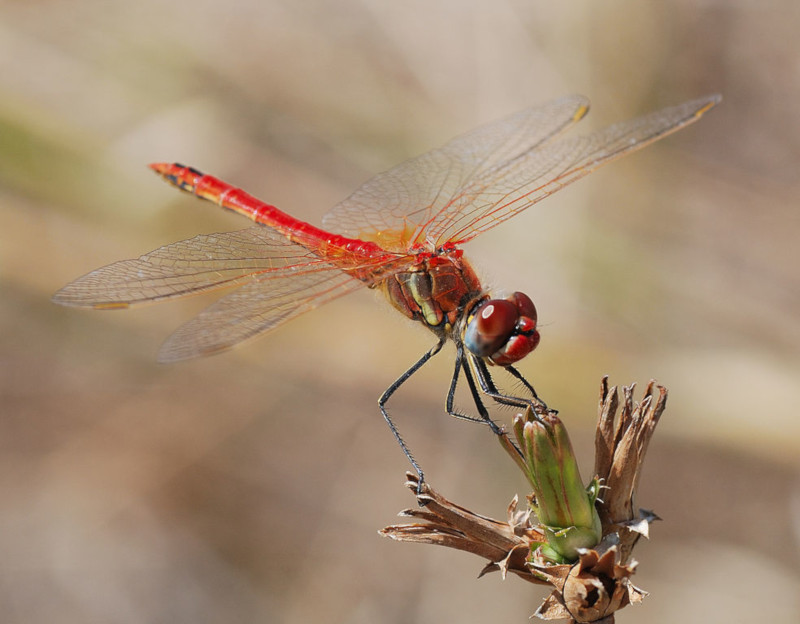Red Veined Darter Facts
- The highly descriptive, as well as accurate, term of Red Veined Darter serves as one of the common names for a striking variety of dragonfly. Some people also know this wonder of nature by yet another common name, choosing to call it simply the nomad.
- The name by which most professional researchers know it, however, remains the somewhat tongue-twisting term of Sympetrum fonscolombii. By either of these names, though, it represents a truly fascinating species of arthropod.
- Its first scientific recognition as a separate, distinct species occurred in the year 1840. At that time, the renowned Belgian entomologist, Edmond de Selys Longchamps named it in honor of another entomologist, Étienne of Fonscolombe.
- For the moment, the population numbers of the amazing Red Veined Darter appear to be both sufficient and stable. As a result, the IUCN currently lists the fabulous species as Least Concern, on the organization’s Red List of Threatened Species.
- Nevertheless, the incredible creature must be considered to be facing at least potential threats to its continued existence. While habitat loss does not appear to pose a danger at this time, the very real threat of climate change could potentially endanger it.
Related Articles
Red Veined Darter Physical Description
The beautiful form of dragonfly known as the Red Veined Darter evolved a remarkably distinctive physical appearance. That appearance varies between individuals, however, given the fact that the fascinating species displays a moderate degree of sexual dimorphism.
In the case of this particular arthropod, that characteristic manifests itself in the coloring, specifically of the abdomen. In the case of the female, this part of the body presents as yellow in color, while in the male, the predominant color remains a bright, vivid red.
Otherwise, the two genders appear virtually indistinguishable from each other. The majority of the rest of the body has a mostly black color, although occasional spots of yellow. The wings also show yellow veins for females, and red for the males.
The legs of most specimens of the amazing Red Veined Darter also have their own unique brand of beauty, setting them apart from similar insects. These generally present as mainly black in color, with some random areas of yellow, much like the body.
- Kingdom: Animalia
- Phylum: Arthropoda
- Class: Insecta
- Order: Odonata
- Family: Libellulidae
- Genus: Sympetrum
- Species: S. fonscolombii
Red Veined Darter Distribution, Habitat, and Ecology
The breathtaking Red Veined Darter actually inhabits a comparatively broad swathe of the world for such a creature. Surprisingly, this includes much of central and southern Europe. This zone of habitation also extends through most of the Mediterranean islands.
Yet this somewhat astonishingly successful invertebrate doesn’t stop there. The distinctive insect also appears in reasonable numbers in Africa, the Middle East and south-western Asia, including the countries of India, Sri Lanka, and Mongolia, just to name a few.
It also displays an ability to adapt to different habitats, or to choose to migrate distances. In Europe, it appears in the southern areas, but in some years migrates northward and reaches as far north as Belgium, Sweden, Finland, Poland and northern England.
This versatility arises from the innate ability of the Red Veined Darter to thrive in a comparatively wide range of habitat types. These include such regions as around various lakes, ponds, marshes, and rivers. It also commonly reappears in dry areas after it rains.
Like others of its kind, this wonder of evolution feeds as an aggressive carnivore, and consumes a wide variety of small insects. It’s also quite territorial by nature, with males frequently observed sitting on an exposed perch, watching over its area.
Species Sharing Its Range
Check out our other articles on 4 Beguiling Bats, Sangai, Cano Cristales, Bleeding Tooth Fungus, Green Anaconda, Basking Shark, Saint Francis’ Satyr Butterfly, Harpy Eagle

